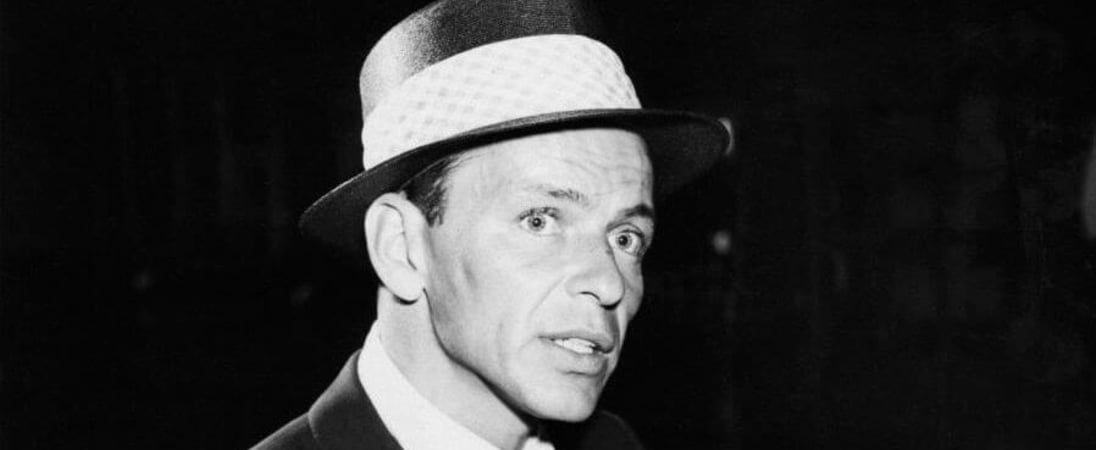
Frank Sinatra's birthday
Regarded as one of the world’s most successful singers and actors, Francis Albert Sinatra (or as he would be known professionally, Frank Sinatra) was born on December 12th, 1915, in Hoboken, New Jersey. Sinatra became interested in music from a young age, while listening to big band jazz and idolizing singer Bing Crosby.
Although he didn’t have any formal musical education, he occasionally sang in his parents’ tavern and played the ukulele at family gatherings. After dropping out of high school in 1931, Sinatra worked in a series of odd jobs to support himself, including singing in Hoboken social clubs and radio stations, while taking elocution classes to improve his speech.
In 1939, after a brief stint with a local singing group known as the Hoboken Four, Sinatra signed a two-year contract with the Harry James band. Under their wing, he released his first record, “From the Bottom of My Heart,” which didn’t perform well commercially.
In 1940, he left the band to become the Tommy Dorsey band’s lead singer, performing in Chicago. With Dorsey, Sinatra recorded more than forty songs some of which turned into hit songs and helped to push Sinatra into the spotlight. The singer’s rising popularity, especially amongst teenage girls (called “bobby-soxers”) led to the phenomenon known as “Sinatramania.” Likewise, the singer was nicknamed “The Voice” or “Swoonatra.”
In 1943, Sinatra signed on to Columbia Records, wishing to pursue a career as a solo artist. From then on, his success only seemed to increase, thanks to numerous top-charting songs as well as his performances on the radio and solo concerts in New York.
By 1946, Sinatra was at the height of his career: he was performing on stage forty-five times a week, had recorded more than thirty-six songs and done more than 160 radio shows. That year, he released his first album, The Voice of Frank Sinatra, which was a big hit. At this time, Sinatra had also launched his film career; some of his first features were Step Lively (1944) and the musical Anchors Aweigh (1945), which was a commercial success. After that, his Hollywood career began to fizzle out.
In 1953, Sinatra’s appearance in romance war film From Here to Eternity earned him his first Academy Award and Golden Globe nominations for Best Supporting Actor. His comeback as a bankable movie star also increased the sales of his records, and he would go on to appear in The Man with the Golden Arm (1955), followed by award-winning roles in High Society (1956), Pal Joey (1957), The Joker Is Wild (1957), Some Came Running and Kings Go Forth (both 1958), A Hole in the Head (1959), and The Manchurian Candidate (1962).
In the music scene, Sinatra switched to Capitol Records in 1956 and released several critically acclaimed albums, including Songs for Swingin’ Lovers! (1956), Come Fly with Me (1958), Only the Lonely (1958), No One Cares (1959), and Come Swing with Me! (1961).
Sinatra founded his own record label in 1960, Reprise Records, and continued to release a series of successful albums (fourteen in total during the 1960s) throughout the decade. His best works of this time were September of My Years (1965) and Francis Albert Sinatra and Antonio Carlos Jobim (1967), and singles “Strangers in the Night,” “That’s Life,” and “My Way.”
In 1971, Sinatra announced his retirement, but returned to the studio two years later, although his musical output decreased to only a handful of records over the span of two decades. His film career also started to dwindle during his last years in activity, focusing mainly on live performances and both national and international tours.
His last public performance was in 1995 and, after years of failing health, Frank Sinatra died on May 14th, 1998, in Los Angeles, California. To this day, his film and musical legacy makes him one of the world’s most popular and best-selling artists of all time, and his impact and place in American culture remains undisputable.
Also on this date...
Gingerbread House Day
Get creative decorating a tiny, edible home and have a friendly competition with family to see who can make the tastiest, prettiest, gingery house.
National Poinsettia Day
These festive plants, with their vibrant red and green foliage, add a cheerful touch to homes during the holiday season.
National Ding-A-Ling Day
Reconnecting with loved ones, engaging in heartwarming conversations to strengthen bonds and share cherished moments.




